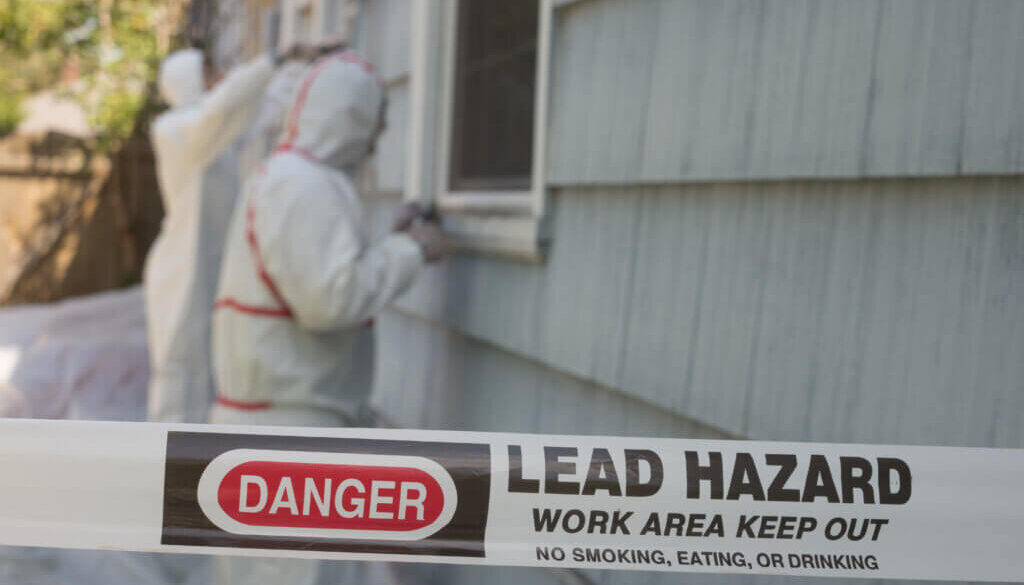How Much Does Commercial Lead Abatement Cost?
If you own a property built before the late 1970s, it’s likely your building contains hazardous lead-based paint. So you might be wondering how much does commercial lead abatement cost and what factors go into determining what you will pay?
Lead Abatement Cost: What to Plan For
Lead abatement work is critical if you are renovating housing — particularly multi-family units where young families are likely to be present. Let’s take a look at what lead abatement work is, what it entails, and how this will affect the costs of your project.
What Is Lead Abatement?
Lead abatement involves the expert demolition or treatment of lead-based surfaces to prevent contamination of a building. It also includes measures to contain and remove any lead dust generated.
Lead abatement work is usually needed whenever paint is disturbed in buildings that were built before the late 1970s when lead-based paint was phased out. Almost all household paint made before 1970 is likely to have been lead-based.
Removal of lead is considered particularly important:
- In areas where young children and pregnant women are present, including multi-family housing, schools, and daycare`
- In low-income housing
- In government-owned or operated properties
The presence of lead can be confirmed by testing a sample of paint. Lead testing and abatement is often required as part of a city-issued building permit for older buildings.
Why Is Lead Dust Dangerous?
Fine lead particles enter the air whenever paint is removed or disturbed, and can enter the bloodstream if inhaled or ingested. Lead is harmful to the development of young children’s brains. If a pregnant woman is exposed, lead dust can affect the development of her developing baby.
The Centers for Disease Control has linked early lead exposure to:
- Lower IQs
- Decreased ability to pay attention
- Underperformance in school
What Does Lead Abatement Involve?
Lead abatement work typically involves:
- Setting up a containment area. This involves covering and sealing windows, doors, HVAC vents, and other areas with barriers to prevent lead particles from contaminating the area or spreading further if already present.
- Creating a negative pressure area to protect abatement workers. A sealed lower-pressure area will keep any dust in place and make it easier to collect. Workers also wear full personal protection equipment, including breathing systems.
- Remove lead materials, either by demolishing or removing painted drywall itself or by treating painted surfaces with chemical strippers that absorb the lead.
- Dispose of lead-bearing materials safely, including demolished materials and strippers. This will usually need to be disposed of in a specially lined lead-safe dump unless the levels of lead fall below a certain threshold.
How Much Does Lead Abatement Cost?
Lead abatement involves securing an entire room or series of rooms to treat paint used on walls, ceilings, and windows. Lead abatement projects tend to be bigger than asbestos or other abatement work. Projects are priced by square foot. Prices can range from $2,500 for a very small job to well over $100,000, to even in the millions for major projects.
A number of other factors affect the total cost of lead abatement work as well.
Type of Project
Abatement costs tend to be significantly more on projects owned or funded by the government, —whether federal, state, or city—because higher standards must usually be met.
On commercial projects, certified environmental services specialists are responsible for making sure lead is safely removed, either as consultants to an owner or as contractors carrying out pre-determined work for a builder or developer.
Consultants will usually cost more than contracted services, but a reputable company can save you money in the long run by ensuring all standards are fully met and properly documented.
Accessibility
How accessible is the room or building where abatement is required? Important factors include:
- Is it easy to get in and out of?
- How easy is it to install barriers?
- How easy is it to ventilate the area?
- Is scaffolding required?
- Will all workers on-site require badging and certification?
What Is the Extent of a Problem?
This can be determined by executing a full survey which will determine how much lead paint is present.
- Are multiple layers of paint present?
- Are other hazards such as asbestos or mercury present?
This will determine if materials can be treated in place or need to be removed.
What Other Work Is Being Done?
Lead abatement is seldom an emergency and usually erupts during a larger renovation or rebuilding project. Overall costs will be lower if workers must remove, rather than treat, surfaces or systems that are going to be replaced or upgraded anyway during a project.
In many cases, larger contractors can include lead abatement costs in the overall scope of a bigger project and will contract with certified environmental services specialists directly.
Tackle Lead Right With Total Environmental Concepts
Lead abatement work is highly regulated in the D.C., Virginia, and Maryland areas and needs to be carried out by qualified workers. At Total Environmental Concepts, our highly experienced team offers the following industry certifications:
- D.C. DDDOE/DOEE Lead Paint Certification
- Licensed Lead Risk Assessor/inspector
- Certified Industrial Hygienists (CIH)
From simple testing to complex multi-hazard projects, our team is here to help you deal with lead and asbestos issues effectively, on time, and within your budget.
Learn more about our lead abatement services:


